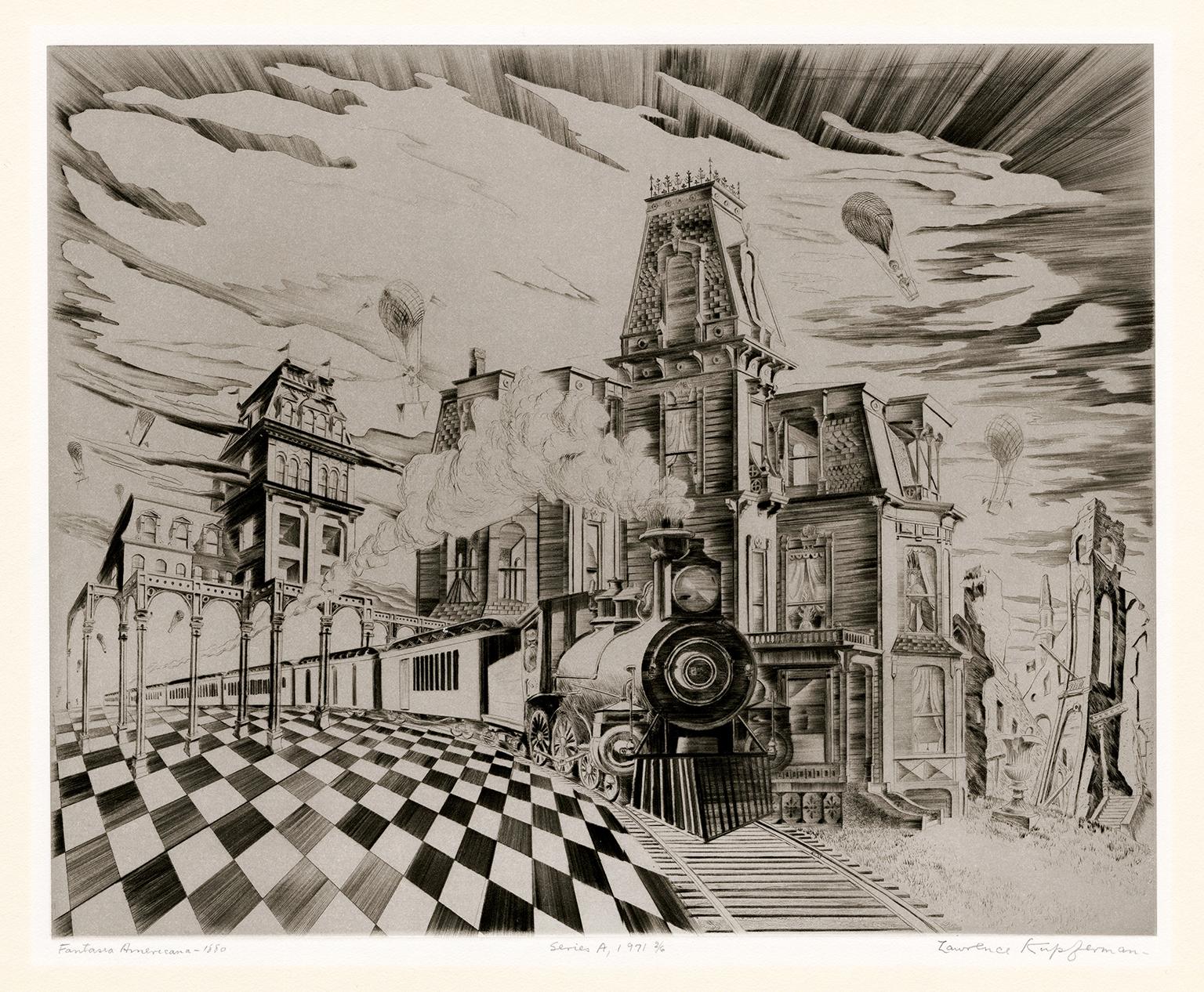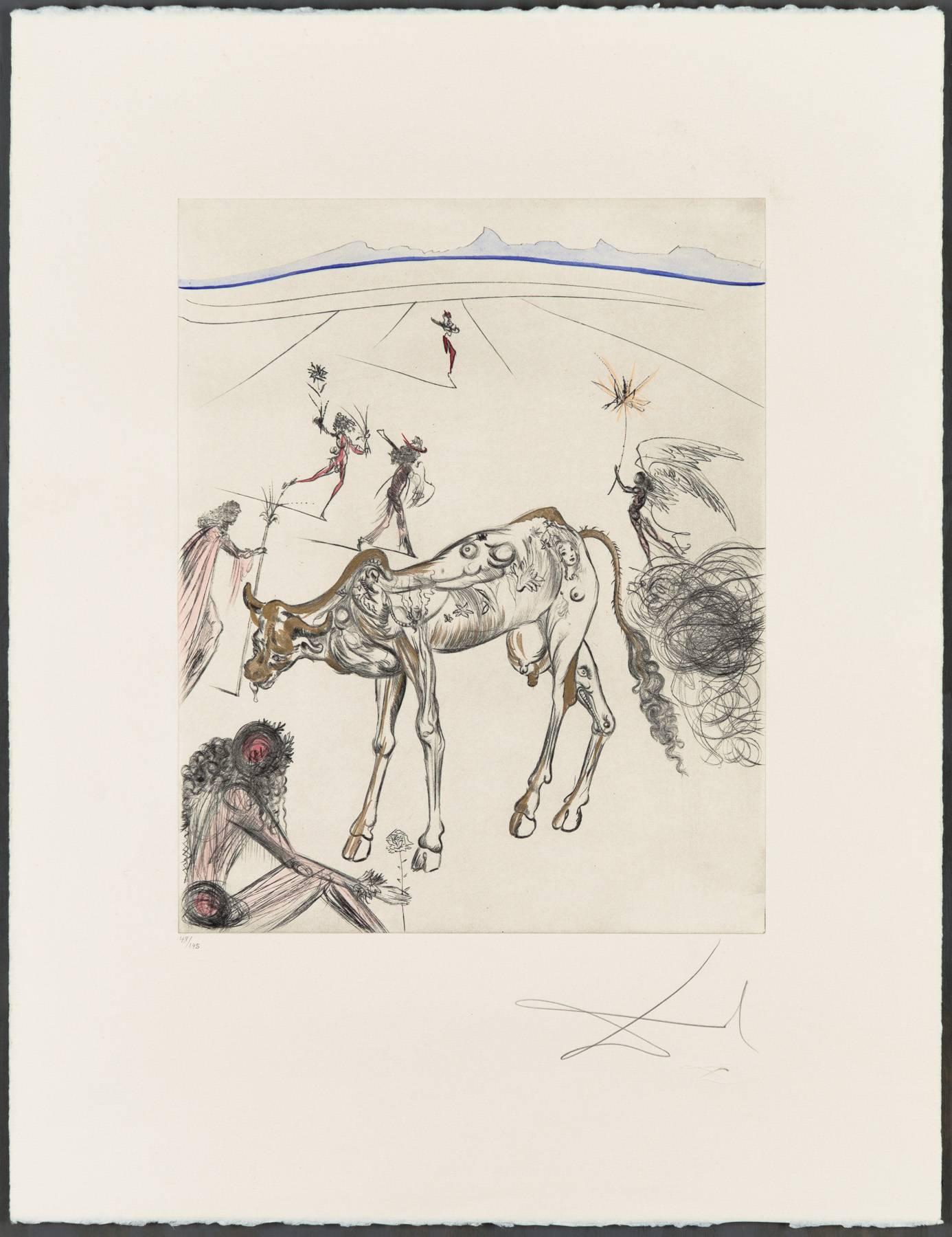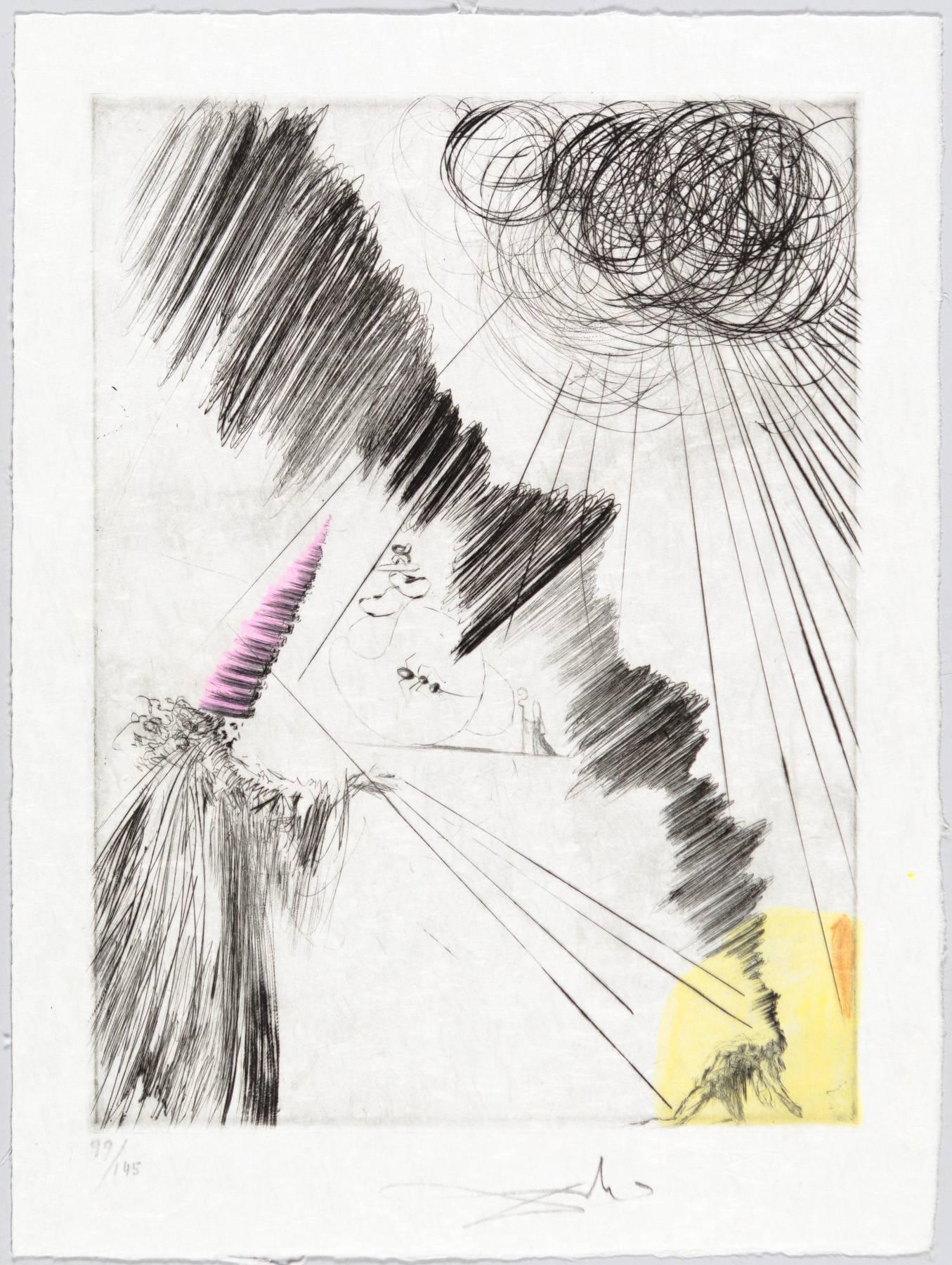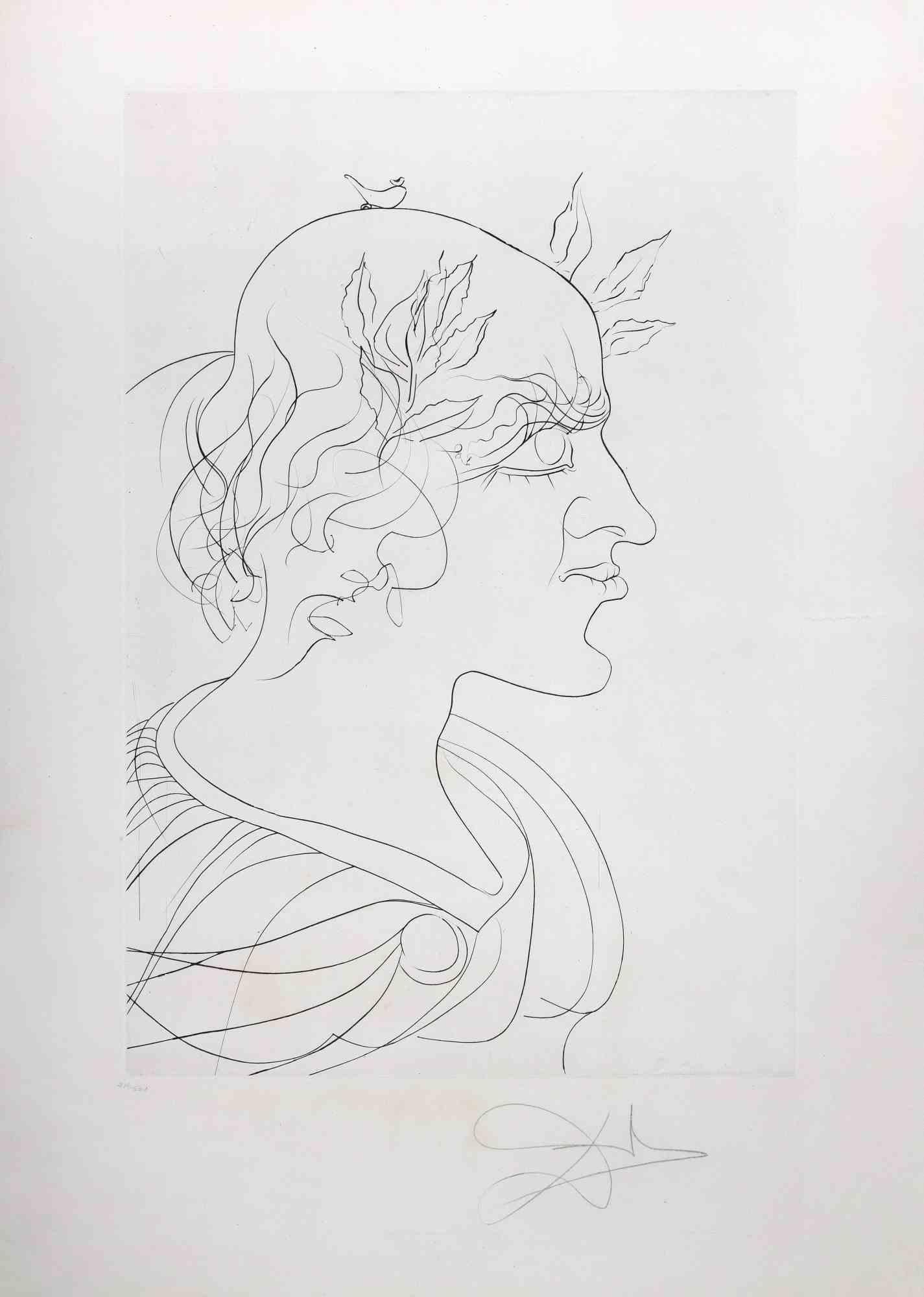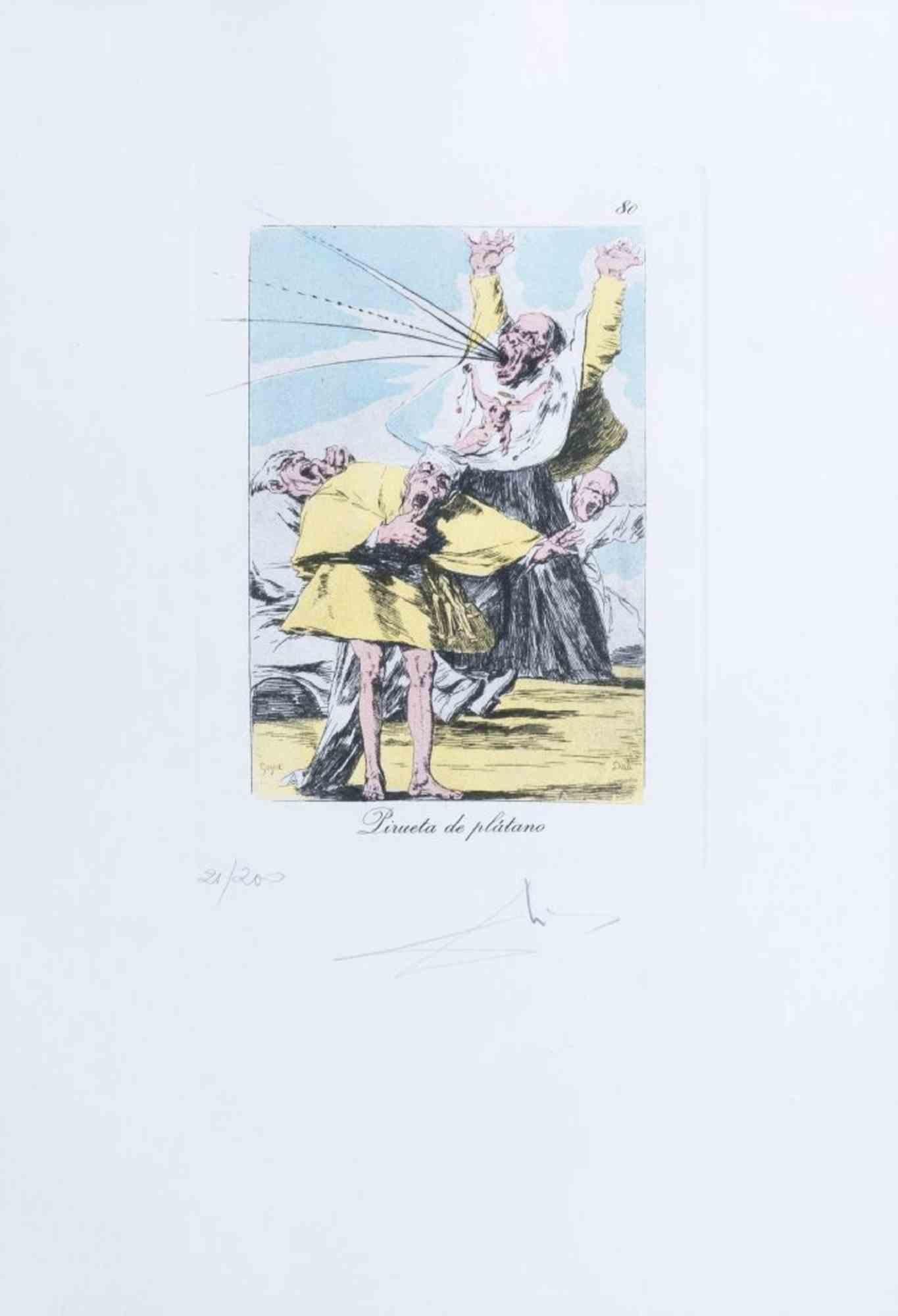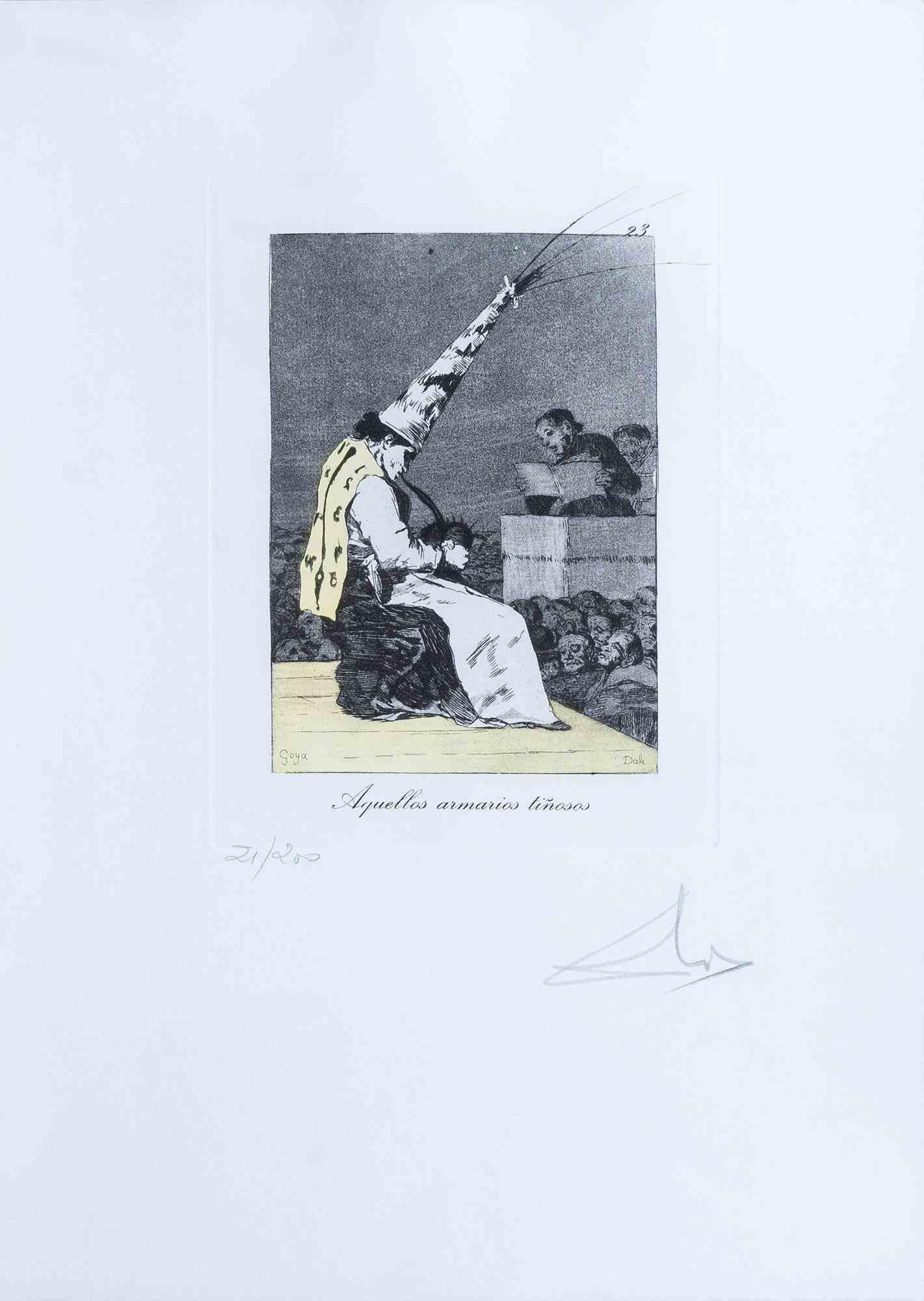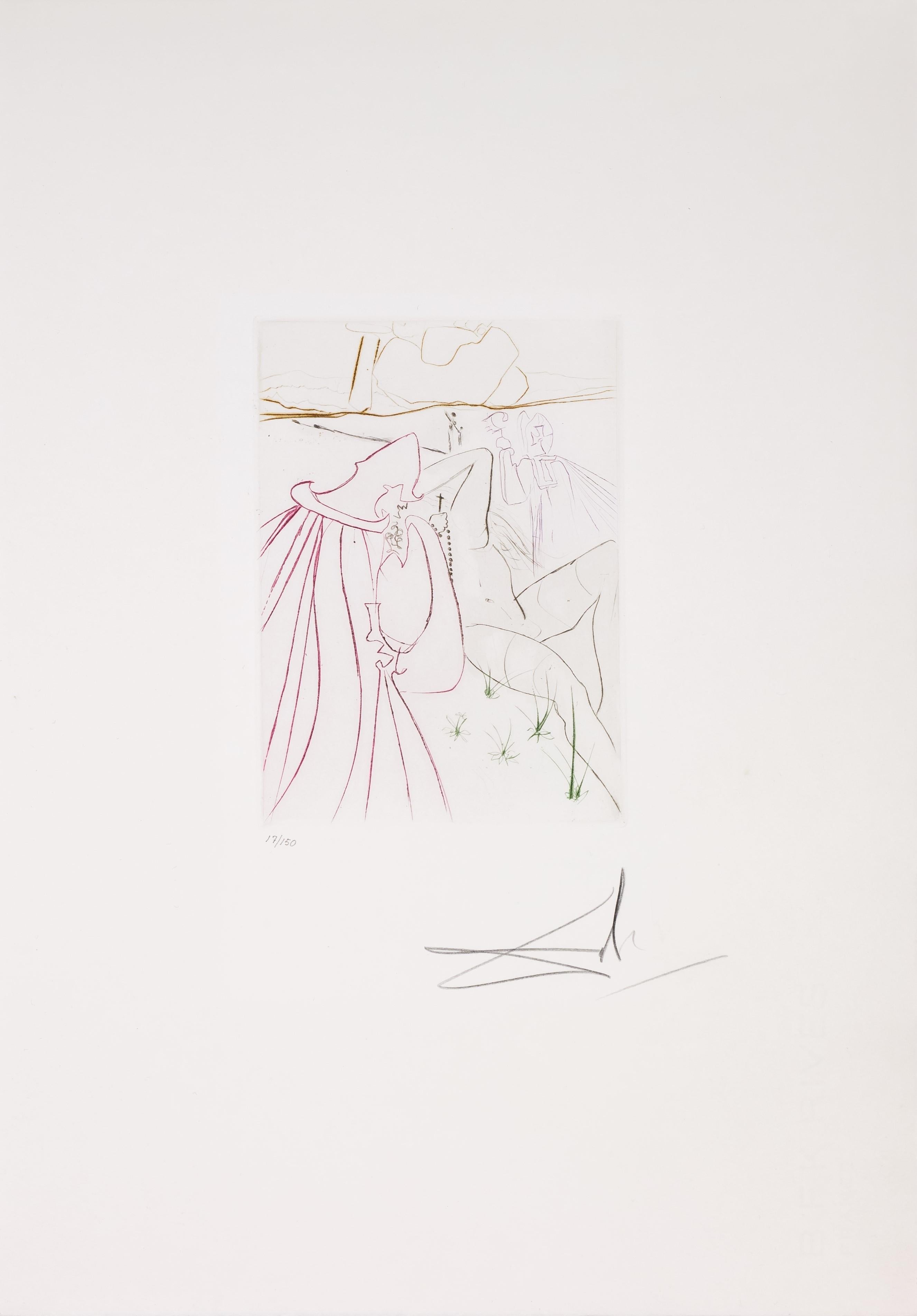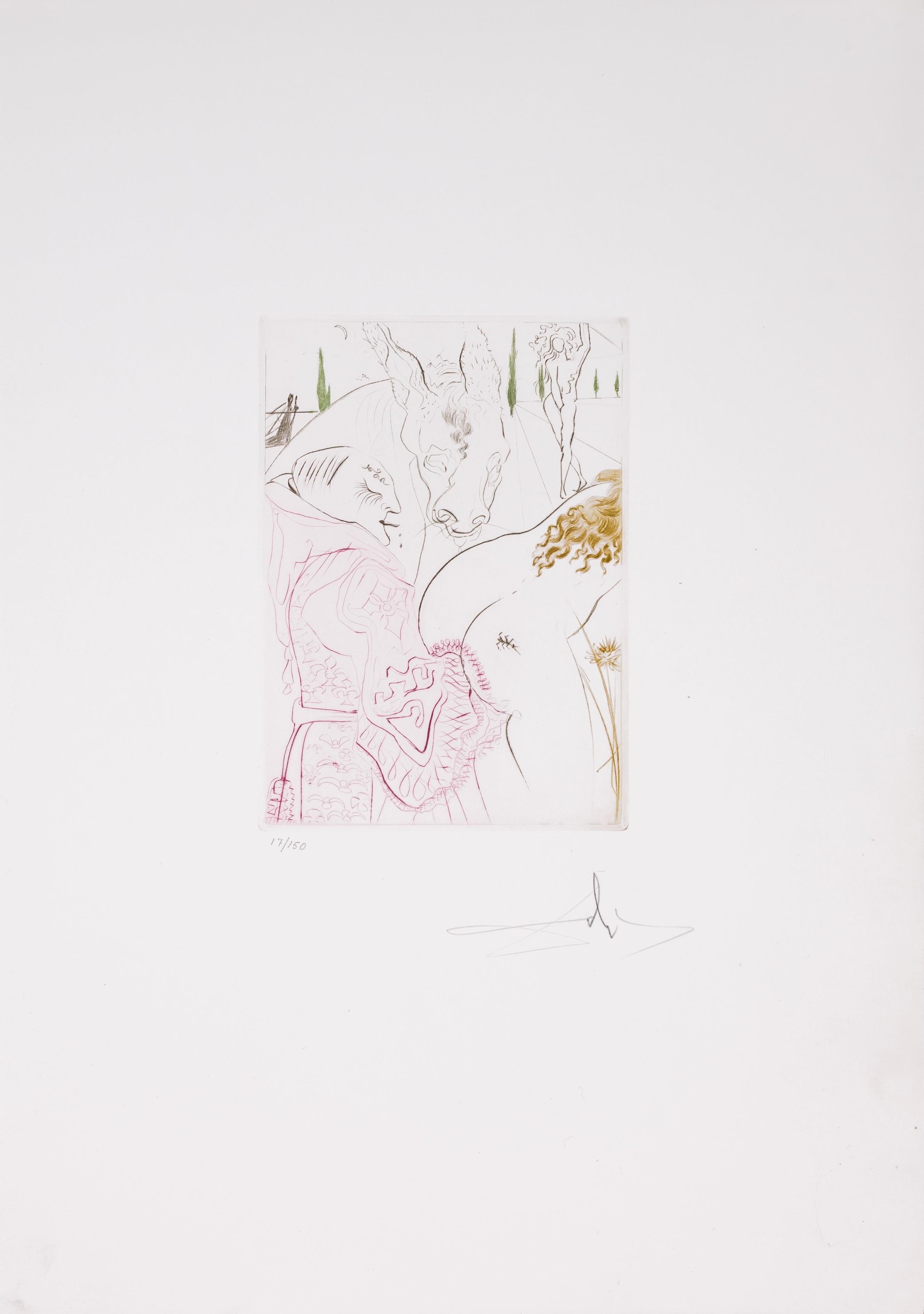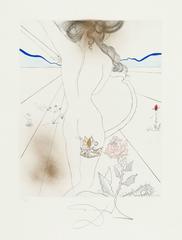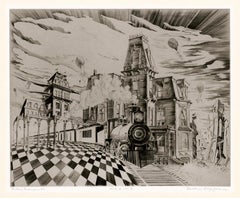
Homme Baisant la Chassure
View Similar Items
Salvador DalíHomme Baisant la Chassure1969
1969
About the Item
- Creator:Salvador Dalí (1904 - 1989, Spanish)
- Creation Year:1969
- Dimensions:Height: 15 in (38.1 cm)Width: 11 in (27.94 cm)
- Medium:
- Movement & Style:
- Period:
- Condition:
- Gallery Location:New Orleans, LA
- Reference Number:1stDibs: LU128416880932
Salvador Dalí
Instantly recognizable by his waxed, upturned mustache, the flamboyant Salvador Dalí is one of modern art’s most distinctive figures. He is also one of the icons of the 20-century avant-garde Surrealist movement, whose dreamlike images, drawn from the depths of the unconscious, he deployed in paintings, sculptures, prints and fashion, as well as in film collaborations with Luis Buñuel and Alfred Hitchcock.
Dalí was born in Figueres, Catalonia, and even as a youngster, displayed the sensitivity, sharp perception and vivid imagination that would later define his artworks. In these, he conjured childhood memories and employed religious symbols and Freudian imagery like staircases, keys and dripping candles to create unexpected, often shocking pieces.
Dalí's use of hyperrealism in conveying Surrealist symbols and concepts that subvert accepted notions of reality is epitomized in what is perhaps his most recognizable painting, The Persistence of Memory (1931), in which he depicts the fluidity of time through melting clocks, their forms inspired by Camembert cheese melting in the sun. His artistic genius, eccentric personality and eternal quest for fame made him a global celebrity.
“Each morning when I awake, I experience again a supreme pleasure,” he once said. “That of being Salvador Dalí.”
Find original Salvador Dalí paintings, prints, sculptures and other works on 1stDibs.
- Nude with GarterBy Salvador DalíLocated in San Francisco, CAOriginal drypoint printed in colors on wove paper bearing the “ARCHES FRANCE” watermark, with hand-coloring added. Hand-signed in pencil in the margin lower right Dalí. A supe...Category
1960s Surrealist Figurative Prints
MaterialsDrypoint
Price Upon Request - VIII from Les MarionnettesBy Hans BellmerLocated in Long Island City, NYArtist: Hans Bellmer, German (1902 - 1975) Title: VIII from Les Marionnettes Year: 1969 Medium: Hand-colored Drypoint Etching on Rice Paper, signed in pencil Image Size: 12 x 11 inch...Category
1960s Surrealist Figurative Prints
MaterialsGouache, Rice Paper, Drypoint
- 'Fantasia Americana - 1880' — Mid-Century American SurrealismBy Lawrence KupfermanLocated in Myrtle Beach, SCLawrence Kupferman, 'Fantasia Americana – 1880', drypoint etching with sandground, 1943. Signed, titled, and annotated 'Series A, 1971 2/6' in pencil. A superb, richly-inked impression, on heavy, cream wove paper, with full margins (2 1/2 to 3 1/2 inches); the paper slightly lightened within the original mat opening, otherwise in excellent condition. One of only 6 impressions printed in 1971, with the added sandground grey background tint. Image size 11 13/16 x 14 3/4 inches; sheet size 18 x 20 1/4 inches. Archivally matted to museum standards, unframed. Collections: National Gallery of Art, Zimmerli Art Museum (Rutgers University). ABOUT THE ARTIST Lawrence Kupferman (1909 - 1982) was born in the Dorchester neighborhood of Boston and grew up in a working-class family. He attended the Boston Latin School and participated in the high school art program at the Museum of Fine Arts, Boston. In the late 1920s, he studied drawing under Philip Leslie Hale at the Museum School—an experience he called 'stultifying and repressive'. In 1932 he transferred to the Massachusetts College of Art, where he first met his wife, the artist Ruth Cobb. He returned briefly to the Museum School in 1946 to study with the influential expressionist German-American painter Karl Zerbe. Kupferman held various jobs while pursuing his artistic career, including two years as a security guard at the Museum of Fine Arts, Boston. During the 1930s he worked as a drypoint etcher for the Federal Art Project, creating architectural drawings in a formally realistic style—these works are held in the collections of the Fogg Museum and the Smithsonian American Art Museum. In the 1940s he began incorporating more expressionistic forms into his paintings as he became progressively more concerned with abstraction. In 1946 he began spending summers in Provincetown, Massachusetts, where he met and was influenced by Mark Rothko, Hans Hofmann, Jackson Pollock, and other abstract painters. At about the same time he began exhibiting his work at the Boris Mirski Gallery in Boston. In 1948, Kupferman was at the center of a controversy involving hundreds of Boston-area artists. In February of that year, the Boston Institute of Modern Art issued a manifesto titled 'Modern Art and the American Public' decrying 'the excesses of modern art,' and announced that it was changing its name to the Institute of Contemporary Art (ICA). The poorly conceived statement, intended to distinguish Boston's art scene from that of New York, was widely perceived as an attack on modernism. In protest, Boston artists such as Karl Zerbe, Jack Levine, and David Aronson formed the 'Modern Artists Group' and organized a mass meeting. On March 21, 300 artists, students, and other supporters met at the Old South Meeting House and demanded that the ICA retract its statement. Kupferman chaired the meeting and read this statement to the press: “The recent manifesto of the Institute is a fatuous declaration which misinforms and misleads the public concerning the integrity and intention of the modern artist. By arrogating to itself the privilege of telling the artists what art should be, the Institute runs counter to the original purposes of this organization whose function was to encourage and to assimilate contemporary innovation.” The other speakers were Karl Knaths...Category
1940s Surrealist Figurative Prints
MaterialsDrypoint, Etching
- Le SoleilBy Salvador DalíLocated in San Francisco, CA1969-70 Original drypoint printed in colors on wove paper bearing the “ARCHES FRANCE” watermark, with hand-coloring added. Hand-signed in pencil in the margin lower right Dali...Category
20th Century Surrealist Figurative Prints
MaterialsDrypoint
Price Upon Request - La Vache SacréeBy Salvador DalíLocated in San Francisco, CAOriginal drypoint printed in colors on wove paper bearing the “ARCHES FRANCE” watermark, with hand-coloring added. Hand-signed in pencil in the margin lower right Dalí. A su...Category
20th Century Surrealist Figurative Prints
MaterialsDrypoint
Price Upon Request - Femme Au ClownBy Salvador DalíLocated in San Francisco, CAOriginal drypoint printed in black ink on Japan paper, with hand-coloring added. Hand-signed in pencil in the margin lower right Dalí. A superb impression of the definitive...Category
20th Century Surrealist Figurative Prints
MaterialsDrypoint
Price Upon Request

